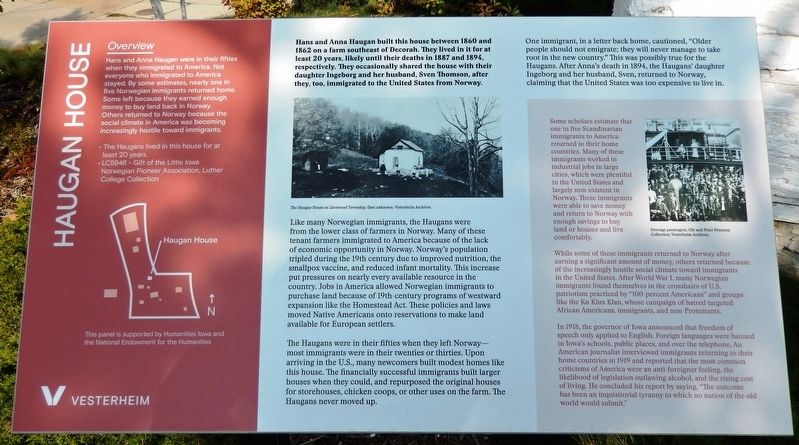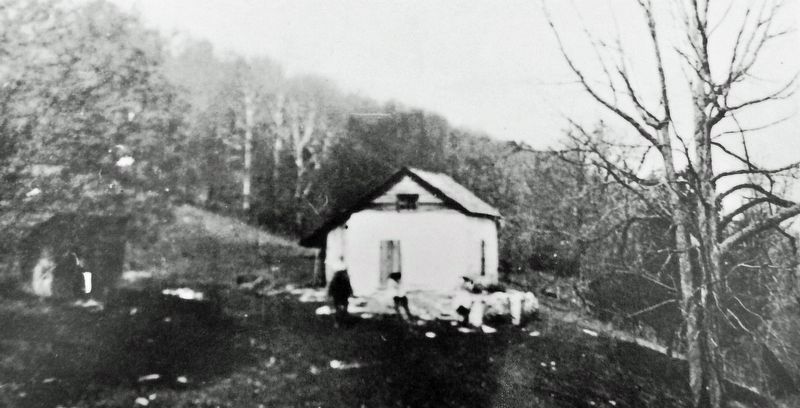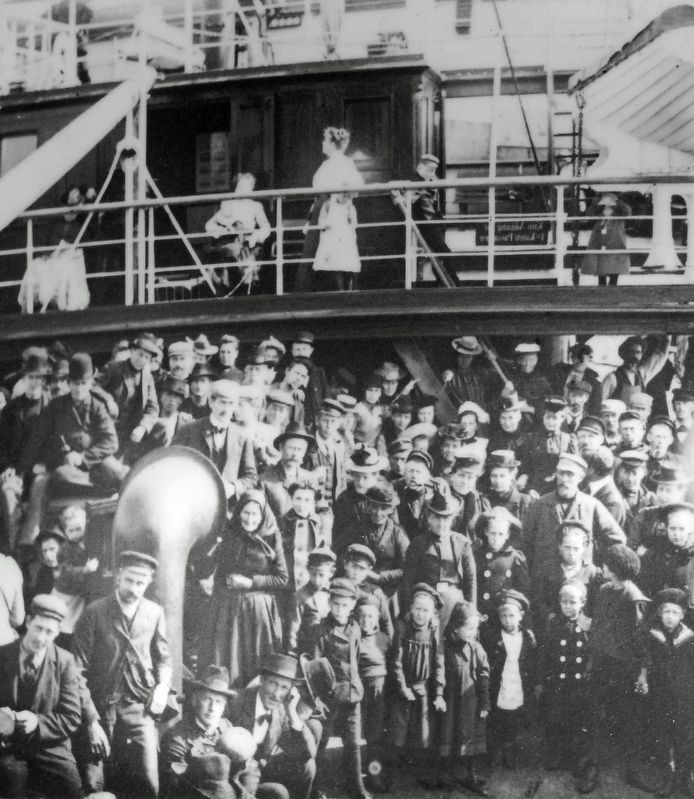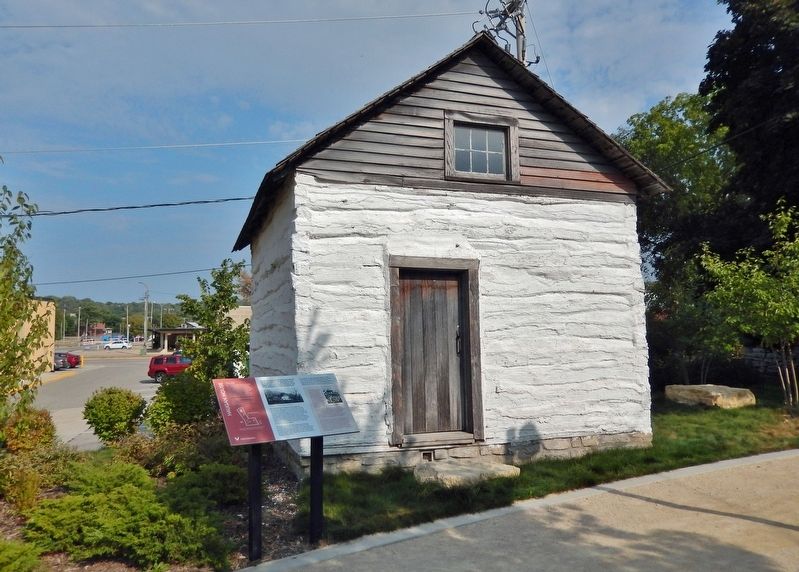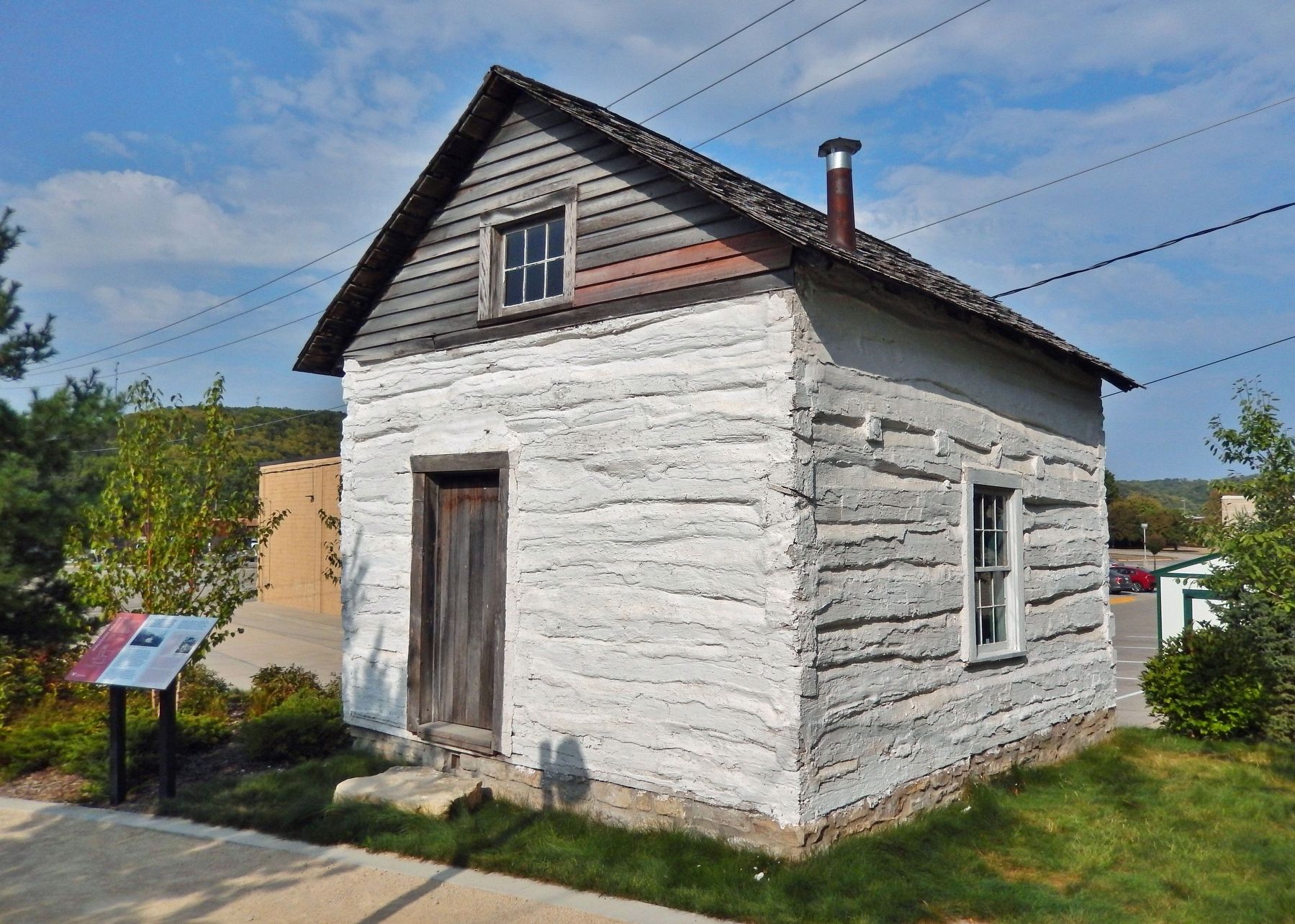Decorah in Winneshiek County, Iowa — The American Midwest (Upper Plains)
Haugan House
Heritage Park, Vesterheim Norwegian-American Museum
Overview
Hans and Anna Haugan were in their fifties when they immigrated to America. Not everyone who immigrated to America stayed. By some estimates, nearly one in five Norwegian immigrants returned home. Some left because they earned enough money to buy land back in Norway. Others returned to Norway because the social climate in America was becoming increasingly hostile toward immigrants.
• The Haugans lived in this house for at least 20 years.
• LC5946 — Gift of the Little Iowa Norwegian Pioneer Association, Luther College Collection
Hans and Anna Haugan built this house between 1860 and 1862 on a farm southeast of Decorah. They lived in it for at least 20 years, likely until their deaths in 1887 and 1894, respectively. They occasionally shared the house with their daughter Ingeborg and her husband, Sven Thomson, after they, too, immigrated to the United States from Norway.
Like many Norwegian immigrants, the Haugans were from the lower class of farmers in Norway. Many of these tenant farmers immigrated to America because of the lack of economic opportunity in Norway. Norway's population tripled during the 19th century due to improved nutrition, the smallpox vaccine, and reduced infant mortality. This increase put pressures on nearly every available resource in the country. Jobs in America allowed Norwegian immigrants to purchase land because of 19th-century programs of westward expansion like the Homestead Act. These policies and laws moved Native Americans onto reservations to make land available for European settlers.
The Haugans were in their fifties when they left Norway — most immigrants were in their twenties or thirties. Upon arriving in the U.S., many newcomers built modest homes like this house. The financially successful immigrants built larger houses when they could, and repurposed the original houses for storehouses, chicken coops, or other uses on the farm. The Haugans never moved up.
One immigrant, in a letter back home, cautioned, “Older people should not emigrate; they will never manage to take root in the new country.” This was possibly true for the Haugans. After Anna’s death in 1894, the Haugans’ daughter Ingeborg and her husband, Sven, returned to Norway, claiming that the United States was too expensive to live in.
Some scholars estimate that one in five Scandinavian immigrants to America returned to their home countries. Many of these immigrants worked in industrial jobs in large cities, which were plentiful in the United States and largely non-existent in Norway. These immigrants were able to save money and return to Norway with enough savings to buy land or houses and live comfortably.
While some of these immigrants returned to Norway after earning a significant amount of money, others returned because of the increasingly hostile social climate toward immigrants in the United States. After World War I, many Norwegian immigrants found themselves in the crosshairs of U.S. patriotism practiced by “100-percent Americans” and groups like the Ku Klux Klan, whose campaign of hatred targeted African Americans, immigrants, and non-Protestants.
In 1918, the governor of Iowa announced that freedom of speech only applied to English. Foreign languages were banned in Iowa's schools, public places, and over the telephone. An American journalist interviewed immigrants returning to their home countries in 1919 and reported that the most common criticisms of America were an anti-foreigner feeling, the likelihood of legislation outlawing alcohol, and the rising cost of living. He concluded his report by saying, “The outcome has been an inquisitorial tyranny to which no nation of the old world would submit.”
Erected by Vesterheim Norwegian-American Museum.
Topics. This historical marker is listed in these topic lists: Architecture • Immigration • Settlements & Settlers. A significant historical year for this entry is 1860.
Location. 43° 18.304′ N, 91° 47.515′ W. Marker is in Decorah, Iowa, in Winneshiek County. Marker can be reached from North Mill Street just north of West Water Street, on the right when traveling north. The marker is located in Vesterheim Norwegian-American Museum Heritage Park. Touch for map. Marker is at or near this postal address: 520 West Water Street, Decorah IA 52101, United States of America. Touch for directions.
Other nearby markers. At least 8 other markers are within walking distance of this marker. Stabbur (a few steps from this marker); Rovang Schoolhouse (a few steps from this marker); Egge-Koren House (within shouting distance of this marker); Valders House (within shouting distance of this marker); Bethania Church (within shouting distance of this marker); Norsvin Mill (within shouting distance of this marker); Stovewood House (within shouting distance of this marker); Blacksmith Shop (within shouting distance of this marker). Touch for a list and map of all markers in Decorah.
Related markers. Click here for a list of markers that are related to this marker. Vesterheim Norwegian-American Museum Heritage Park
Also see . . . Haugan House. (Includes link to a virtual tour of the interior.) Excerpt:
From Rural Decorah, Iowa (1860-1862). This house is one of two similar log homes from rural Decorah now in the Heritage Park. Hans and Anna Haugan lived here for at least twenty years. They were in their fifties when they left Norway, whereas most immigrants were much younger. Like many immigrants, however, they were of the husmann, or tenant farmer, class. It is significant that in America, they owned their home and farm.(Submitted on November 22, 2023, by Cosmos Mariner of Cape Canaveral, Florida.)
Credits. This page was last revised on November 24, 2023. It was originally submitted on November 16, 2023, by Cosmos Mariner of Cape Canaveral, Florida. This page has been viewed 52 times since then and 17 times this year. Photos: 1, 2, 3, 4, 5. submitted on November 21, 2023, by Cosmos Mariner of Cape Canaveral, Florida.
